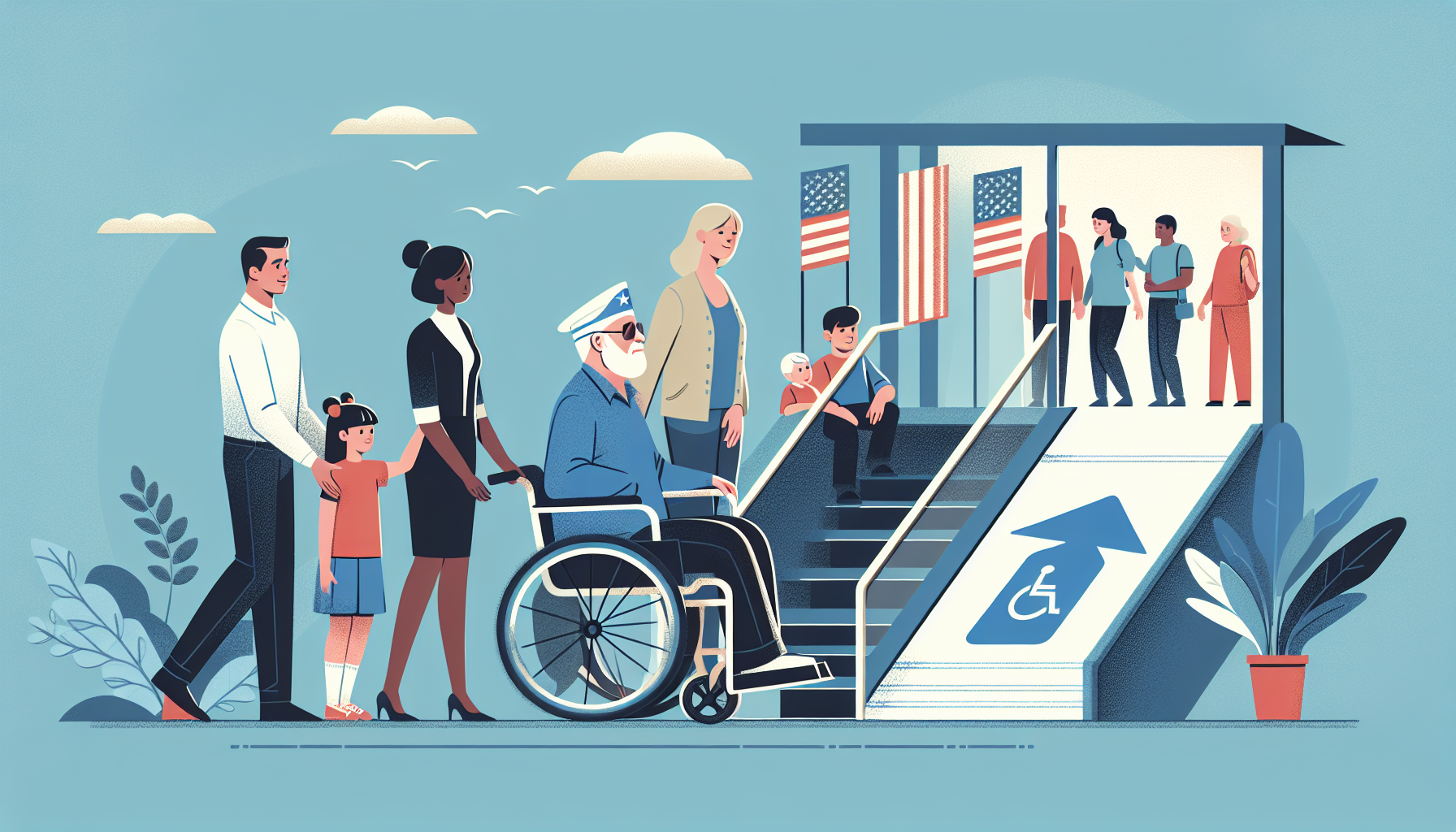Definition
The Disabled Access Credit is a tax credit available for small businesses in the United States to cover expenses incurred while making their facilities accessible for customers and employees with disabilities. This non-refundable credit is aimed at encouraging businesses to comply with the Americans with Disabilities Act (ADA) guidelines. It allows businesses to claim up to 50% of eligible accessibility-related expenses between $250 and $10,250, resulting in a maximum tax credit of $5,000 per year.
Key Takeaways
- The Disabled Access Credit is a tax credit provided by the IRS under the Americans with Disabilities Act (ADA), aimed at helping small businesses make accommodations for employees and customers with disabilities.
- Qualifying businesses can claim a non-refundable credit of up to 50% of eligible expenses exceeding $250 but not more than $10,250, resulting in a maximum credit of $5,000.
- Eligible expenses include costs associated with removing architectural barriers, providing auxiliary aids/services, and making improvements to comply with ADA standards, such as widening doorways, installing ramps, or purchasing Braille signage.
Importance
The term “Disabled Access Credit” is important in the context of VA benefits because it signifies a significant financial provision designed to assist small businesses in accommodating disabled veterans and other disabled individuals.
This non-refundable tax credit allows eligible businesses to offset the cost of making their facilities or services more accessible, removing barriers, and ensuring compliance with the Americans with Disabilities Act (ADA). By doing so, the Disabled Access Credit promotes inclusivity, fostering equal opportunities for disabled veterans and individuals to access essential services and participate more fully in various aspects of society.
Ultimately, this benefits both the disabled community and the businesses, creating a more diverse and accessible world.
Explanation
The Disabled Access Credit aims to assist small businesses in their endeavor to comply with the requirements of the Americans with Disabilities Act (ADA). This federal legislation safeguards the rights of individuals with disabilities by ensuring they receive equal access to various facets of public life, including employment, transportation, and services provided by public and private entities. By providing financial incentives for small businesses to accommodate employees and customers with disabilities, the Disabled Access Credit fosters an inclusive and diverse working environment and ensures that no one is left behind.
In achieving its purpose, the Disabled Access Credit is designed to support businesses in overcoming the financial challenges they may face while implementing necessary adjustments to remain ADA compliant. These modifications may encompass a range of activities, such as providing sign language interpreters, installing ramps or grab bars, widening doorways, and modifying equipment to accommodate users with disabilities.
Not only does the Disabled Access Credit alleviate some of the financial burden on small businesses, it also promotes inclusivity in the larger context by creating accessible environments for everyone. Ultimately, this financial incentive serves to encourage a more equitable and barrier-free society for individuals with disabilities.
Examples of Disabled Access Credit
The Disabled Access Credit (DAC) is a tax credit provided to eligible small businesses to encourage them to make accessibility improvements for disabled individuals under the Americans with Disabilities Act (ADA). Here are three real-world examples of how the DAC can be used:
A local coffee shop: A small coffee shop owner realizes that their entrance is not wheelchair-accessible due to a few steps at the entryway. The owner decides to install a ramp to make it easier for customers with disabilities to access the shop. The cost of the ramp and its installation can be eligible for the Disabled Access Credit, thereby reducing the coffee shop’s tax liability.
A dentist’s office: A dentist’s office decides to improve its accessibility for patients with disabilities. They invest in upgrading doorways to meet ADA standards, installing additional handrails in restrooms, and purchasing an adjustable dental chair to accommodate patients in wheelchairs. These expenses can qualify for the Disabled Access Credit, providing a tax benefit for the dental practice.
A retail store: A small clothing store notices that their store layout is not easily navigable for individuals using mobility aids, such as wheelchairs or walkers. The store owner decides to rearrange the store layout and create wider aisles, lower countertops, and provide lower clothing racks to improve accessibility for disabled customers. The costs associated with these improvements may qualify for the Disabled Access Credit, reducing the store’s tax bill.
FAQ: Disabled Access Credit
What is the Disabled Access Credit?
The Disabled Access Credit is a non-refundable tax credit offered to small businesses that incur expenses for providing access to persons with disabilities. The credit is intended to help businesses comply with the requirements of the Americans with Disabilities Act (ADA).
Who is eligible for the Disabled Access Credit?
Small businesses with 30 or fewer full-time employees and less than $1 million in annual gross receipts in the previous tax year may be eligible for the Disabled Access Credit.
What types of expenses qualify for the Disabled Access Credit?
Eligible expenses include costs associated with removing physical barriers, providing accessible services and materials, modifying equipment, and hiring interpreters or other auxiliary aids and services required under the ADA.
How much is the Disabled Access Credit and how is it calculated?
The credit is equal to 50% of the eligible access expenditures in a year, up to a maximum of $10,000. However, businesses must subtract $250 from the amount of eligible expenses to calculate the credit, meaning the maximum credit is $5,000. For example, if a business spends $10,500 on eligible expenses, the credit would be 50% of ($10,500 – $250) = $5,125. Since the maximum credit is $5,000, the business would receive the full $5,000 credit.
How do I claim the Disabled Access Credit?
Businesses can claim the Disabled Access Credit by completing and submitting IRS Form 8826, Disabled Access Credit, along with the business’s income tax return.
Can I carry the credit forward or backward if I cannot use it against my current year’s tax liability?
No, the Disabled Access Credit is a non-refundable credit, which means that it can only be used to offset your current year’s tax liability. Any unused credit cannot be carried forward or backward to other tax years.
Related VA Benefit Terms
- Accessible Building Modifications
- Adaptive Equipment
- Disability Tax Credit
- Barrier Removal
- Wheelchair Ramps
Sources for More Information
- Internal Revenue Service (IRS)
- U.S. Department of Veterans Affairs
- Social Security Administration
- National Network Information, Guidance, and Training on the Americans with Disabilities Act (ADA)
 Benefits.com Advisors
Benefits.com Advisors
With expertise spanning local, state, and federal benefit programs, our team is dedicated to guiding individuals towards the perfect program tailored to their unique circumstances.
Rise to the top with Peak Benefits!
Join our Peak Benefits Newsletter for the latest news, resources, and offers on all things government benefits.





















